Hospital waste management
Save on commercial waste collection quotes today
Just enter your postcode…
Save on commercial waste collection quotes today
Just enter your postcode…
Start saving now
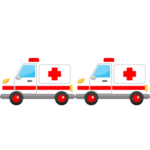
Yorkshire Ambulance Service NHS Trust alone eliminated 200,000 single-use plastic items from its waste.

NHS providers in England produce approximately 156,000 tonnes of clinical waste each year, equivalent to over 400 loaded jumbo jets.
Effective disposal of hospital waste is critical to preventing environmental contamination and safeguarding public health.
Explore the stringent protocols and innovative practices that ensure safe waste management in healthcare settings.
We will cover the following subjects in detail:
The ‘First, do no harm’ principle in medical ethics protects patient safety.
Like other aspects of healthcare, effective waste management is also essential for protecting the health of patients, staff and the wider environment.
Our experts break down the various waste streams within healthcare facilities, emphasising the importance of proper disposal techniques and segregation practices.
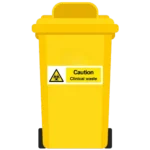
Clinical waste includes waste contaminated with bodily fluids, blood, or other infectious materials. It poses a risk of infection and is typically disposed of through incineration or autoclaving. This category includes used swabs, bandages, and gloves from patient care.

Expired, contaminated, or no longer-needed drugs fall into this category. Pharmaceutical waste can be hazardous and requires careful disposal to prevent pollution and misuse.
Pharmaceutical waste also includes discarded medications and contaminated bottles or blister packs.

Sharps waste includes any device or object used to puncture or lacerate the skin. This category is highly hazardous as it can cause injuries and spread infections.
Sharps include needles, syringes, blades, and lancets. They are usually disposed of in rigid, puncture-resistant containers.

Dry mixed recycling in hospitals includes non-contaminated paper, cardboard, plastics, and aluminium cans, often originating from administrative areas.
These materials must be separated at the source to prevent clinical or hazardous waste contamination. This will enable them to be recycled effectively and reduce the environmental impact of hospital waste.

Chemical waste includes discarded solvents, disinfectants, and other substances used in medical procedures or cleaning.
Chemical waste can be toxic, corrosive, flammable, or reactive and must be handled according to strict safety standards to prevent harm to health and the environment.
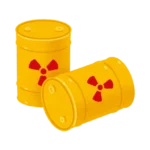
Waste containing radioactive substances, such as materials used in radiation therapy or certain diagnostic imaging, requires specialised facilities for safe shielding and containment during disposal.
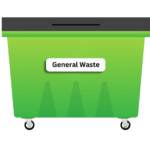
This includes waste that poses no biological, chemical, radioactive, or physical hazard. Examples include office paper, kitchen waste, and non-contaminated packaging.
Depending on its nature, this waste can often be recycled or disposed of with regular commercial waste.
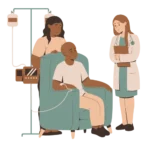
Cytotoxic waste is specific to cancer treatments and includes any material contaminated by cytostatic or cytotoxic drugs. This type of waste is highly toxic and requires special procedures to ensure it does not pose a risk to handlers or the environment.
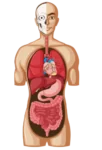
Consists of body parts, organs, and tissues from surgery or research. It is considered highly sensitive and must be disposed of according to specific legal and ethical guidelines, typically through incineration.
Our experts present key strategies hospitals can employ to reduce waste and enhance sustainability.
We delve into practical approaches for cutting waste at the source, improving recycling efforts, and implementing more efficient waste management practices.

Hospitals can minimise waste by enhancing their procurement processes to prevent overordering and the accumulation of stock that may expire.
For instance, adopting just-in-time inventory systems can significantly reduce the storage of perishable and non-perishable items, decreasing waste from expired products.

Hospitals can enhance the effectiveness of recycling programmes by implementing well-marked and strategically placed segregation systems for various types of waste (clinical, recyclable, general).
This also reduces the contamination of waste streams, thus decreasing the volume of waste sent for costly treatments like incineration.

Hospitals can reduce medical waste and supply costs by initiating programmes to clean, sterilise, and reuse certain medical devices typically designed for single use, such as surgical instruments and catheters, following strict health and safety guidelines.

Transitioning from paper to digital records can drastically reduce the amount of paper waste generated by hospitals. Implementing electronic health records (EHRs) manages patient information electronically, eliminating the need for multiple physical copies.

Hospitals can significantly reduce food waste by improving meal forecasting based on patient counts and preferences.
Unused food that meets safety standards can also be donated to local shelters, or organic waste can be composted

Minimising the volume and variety of chemicals stored on-site can reduce the risk of chemical waste. For example, adopting microfiber mopping systems can decrease the need for chemical-based cleaners, thus lowering the amount of expensive hazardous waste hospitals produce.
The UK’s National Health Service (NHS) manages a substantial amount of waste, with healthcare providers in England generating nearly 600,000 tonnes annually.
This figure underscores the considerable challenge and cost associated with waste management in the healthcare sector, estimated at around £700 million annually.
Navigating the complexities of hospital waste management is crucial for ensuring environmental safety and maintaining public health standards.
By segregating waste at the source, hospitals can minimise risks and enhance sustainability efforts effectively.
Our experts break the strategy down further:

Placement: Near patient care areas, treatment rooms, and operating theatres.
Common Materials: Swabs, bandages, gloves contaminated with bodily fluids, and other infectious materials.
Reason: These bins are used for waste that poses a risk of infection, requiring safe containment and often incineration or special treatment to prevent disease transmission.

Placement: In pharmacies, medication preparation areas, and nursing stations.
Common Materials: Expired drugs, contaminated drugs, and unused medications.
Reason: To prevent pollution and misuse, pharmaceutical waste needs secure disposal. These bins ensure that harmful substances are managed responsibly.

Placement: In any area where injections are administered, or surgery is performed, such as treatment rooms and surgical wards.
Common Materials: Needles, syringes, blades, and lancets.
Reason: Sharps waste is hazardous as it can cause injuries and spread infections. These bins are typically rigid and puncture-resistant to ensure safe disposal.

Placement: In office areas, canteens, and non-patient care areas.
Common Materials: Paper, cardboard, plastics, and non-contaminated metals.
Reason: These materials are recyclable and do not require special treatment, reducing the environmental impact and promoting recycling.

Placement: Throughout the hospital in offices, waiting rooms, and cafeterias.
Common Materials: Food waste, non-recyclable packaging, and other non-hazardous waste.
Reason: For waste similar to domestic waste, which does not pose a health risk and is typically collected by commercial waste providers.

Placement: In oncology departments, chemotherapy is prepared and administered.
Common Materials: Items contaminated with cytostatic or cytotoxic drugs, such as gloves, masks, and IV tubes.
Reason: Cytotoxic waste is highly toxic and requires stringent handling procedures to prevent harm to healthcare workers and the environment.

Placement: In nuclear medicine departments.
Common Materials: Waste contaminated by radioactive substances, like certain diagnostic imaging fluids.
Reason: Special handling and disposal are required for radioactive waste to protect human health and the environment from radiation exposure.
The COVID-19 pandemic led to a substantial increase in clinical waste produced by hospitals due to the usage of disposable personal protective equipment (PPE) and other consumables. This has posed new challenges in waste management logistics and capacity.
Before the pandemic, the UK’s National Health Service (NHS) dealt with significant clinical waste.
In 2018, NHS Trusts in England generated around 133,000 tonnes of waste, of which approximately 18% was classified as hazardous, according to NHS data. More details can be found in the NHS England Annual Reports.
The pandemic saw a sharp rise in medical waste generation due to increased usage of disposable PPE and other consumables. Key aspects include:
In April 2020, it was estimated that the NHS could need up to 150 million masks, 25 million gowns, and 255 million pairs of gloves per month during the pandemic’s peak, illustrating the dramatic increase from pre-pandemic levels. This information is outlined in the NHS clinical waste strategy.
The surge in waste during the pandemic posed several challenges:
During the COVID-19 pandemic, the UK’s Environment Agency issued Regulatory Position Statements to help waste operators manage the surge in waste safely and compliantly.
Simultaneously, significant investments were made to improve the capacity and efficiency of waste treatment and disposal facilities.
The pandemic also triggered discussions and initiatives focused on reducing the use of disposable items in healthcare and exploring sustainable alternatives.
In the post-pandemic era, there is a dynamic push towards enhancing the sustainability of waste management in healthcare.
Efforts are being streamlined to explore reusable PPE options and improve waste segregation practices to reduce waste significantly.
Policies are being fortified to ensure the healthcare sector can sustainably manage waste and remain prepared for future public health emergencies, aligning with broader public health and environmental goals.
Check out our waste minimisation strategies for hospitals above to tackle the ever-increasing waste levels.